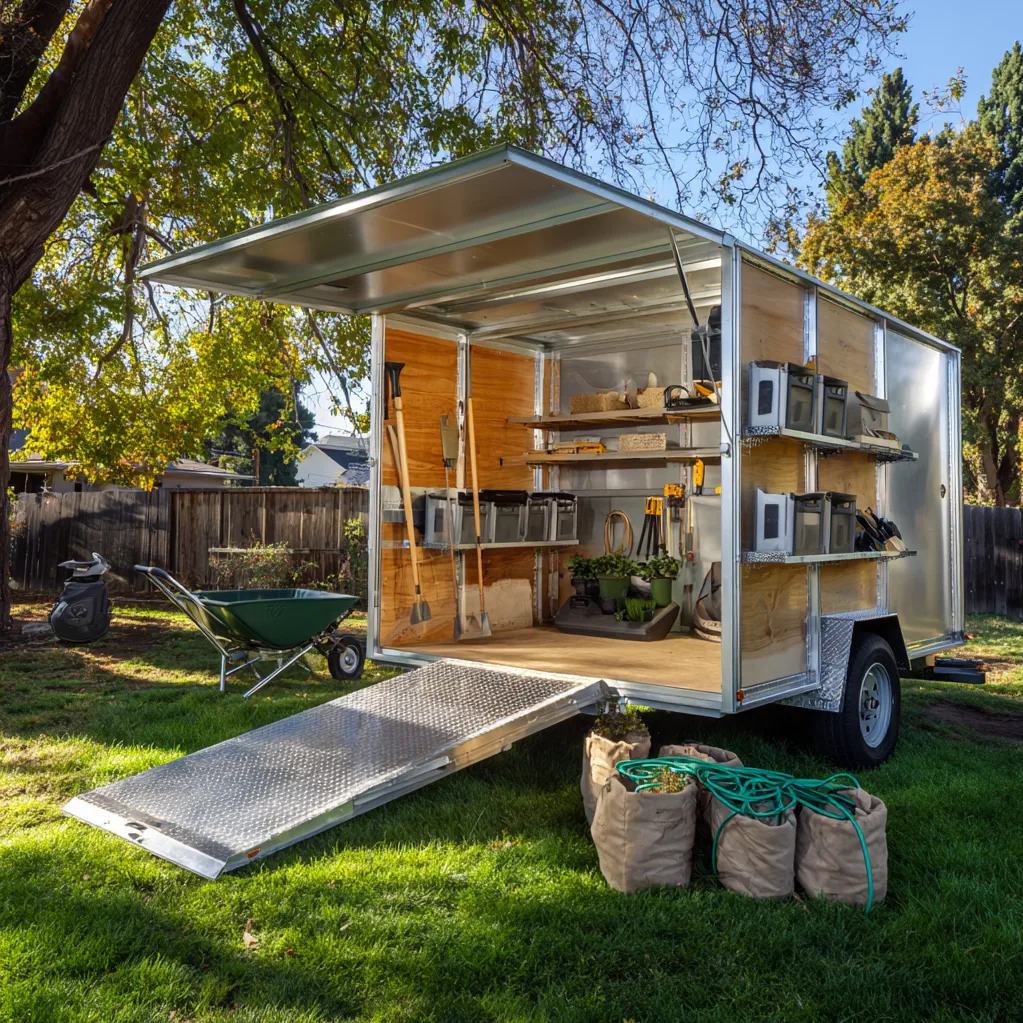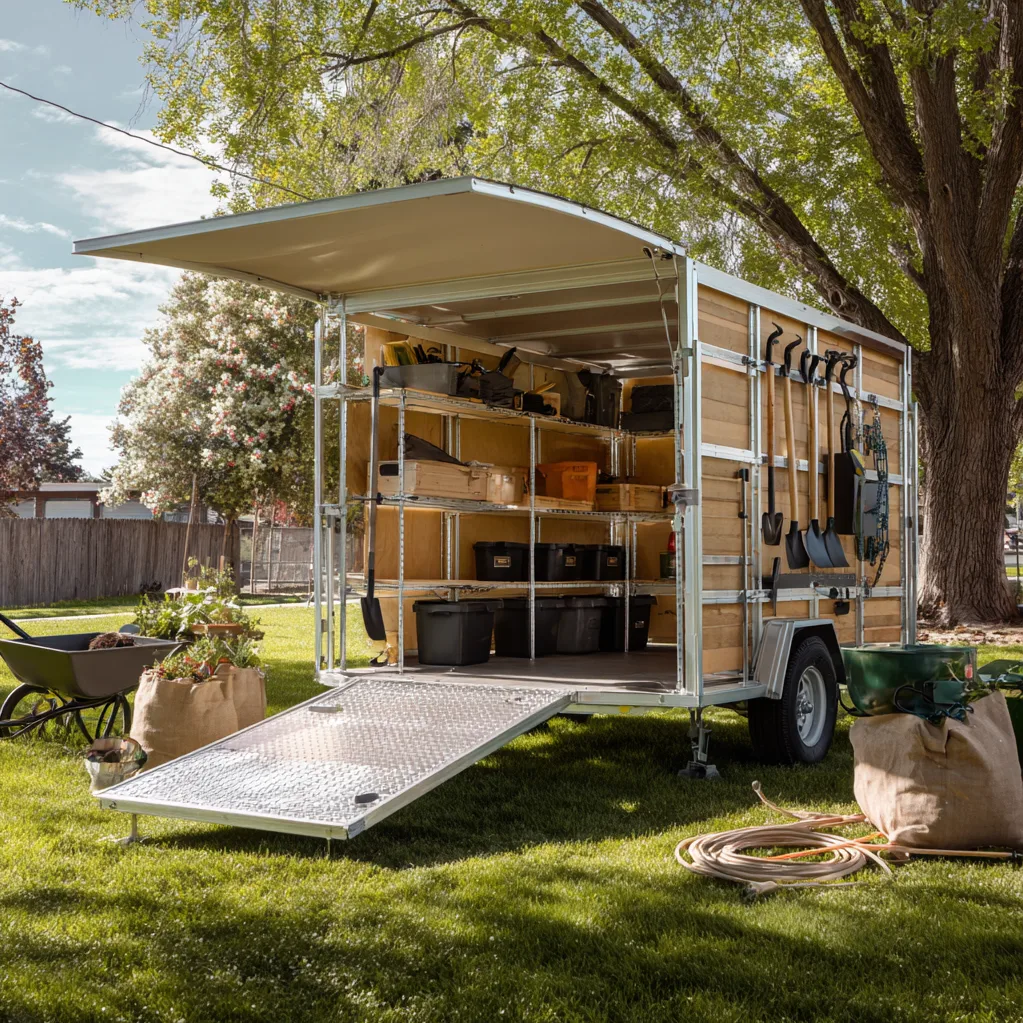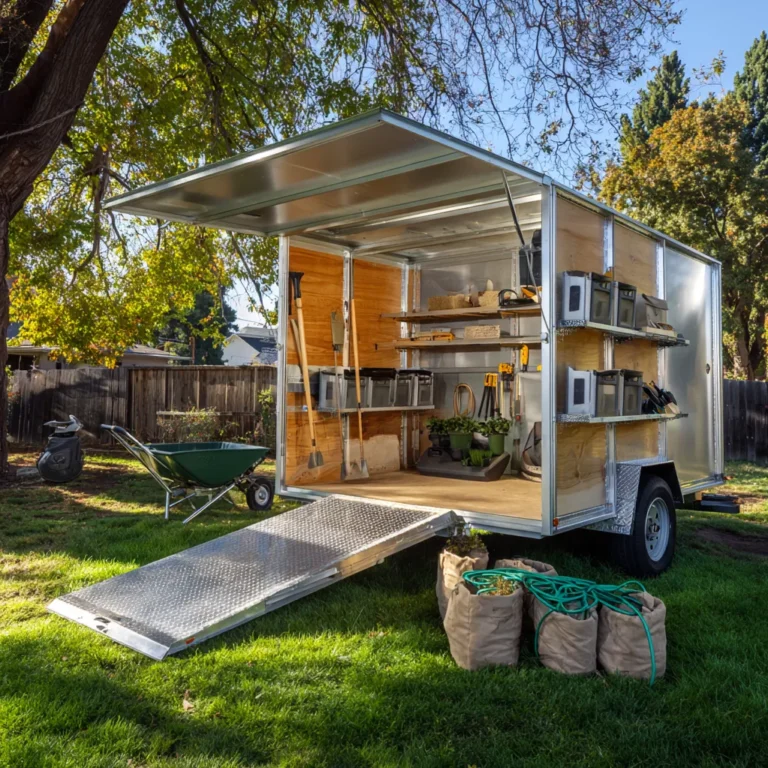
Imagine pulling into a job site with a trailer that not only carries your tools but showcases your creativity and professionalism. Custom landscape trailer ideas are revolutionizing how gardening and landscaping enthusiasts approach their work. A well-designed trailer isn’t just a hauling device; it’s a mobile workshop that boosts efficiency and inspires pride. Whether you’re a DIY gardener or a professional landscaper, personalizing your trailer can transform it from a simple utility into a powerful asset. With the right modifications, you can organize tools, protect plants, and even create a portable display for your business. This article dives into innovative ways to upgrade your trailer, focusing on practicality and aesthetics. By exploring these ideas, you’ll discover how to make your trailer work smarter for you, saving time and enhancing your projects. Start with assessing your needs—do you require more storage, better accessibility, or weather protection? From there, the possibilities are endless. For instance, adding custom shelving can keep everything in reach, while integrated lighting ensures you’re prepared for early mornings or late evenings. Embracing these ideas can elevate your landscaping game, making every trip more productive and enjoyable. Don’t settle for a generic setup; unleash the potential of your trailer and see how it transforms your outdoor endeavors. Ready to get inspired? Let’s explore some game-changing customizations that you can implement today. In the following sections, we’ll cover top trends and practical tips to help you create a trailer that’s uniquely yours.

Creative Custom Landscape Trailer Ideas for Storage and Organization
When it comes to custom landscape trailer ideas, storage and organization are often the top priorities. A cluttered trailer can slow you down, leading to wasted time and frustration. By designing smart storage solutions, you can keep tools, soil, and plants neatly arranged and easily accessible. Start with modular shelving units that can be adjusted based on your load. For example, install heavy-duty metal racks with dividers to separate shovels, rakes, and pruners. This not only prevents damage but also makes inventory checks a breeze. Another great idea is to incorporate pull-out drawers beneath the main deck. These can hold smaller items like gloves, seeds, or fertilizers, keeping them safe from the elements. For bulkier items, consider adding overhead compartments or side-mounted bins. These are perfect for storing pots, hoses, or even spare parts. If you often transport delicate plants, built-in plant holders with adjustable slots can prevent shifting during transit. Use materials like treated wood or corrosion-resistant metal to ensure durability in all weather conditions. Don't forget about tie-down points and bungee cord anchors to secure loose items. A well-organized trailer not only improves efficiency but also extends the life of your equipment. For inspiration, check out this guide on trailer modifications from a trusted source like Family Handyman. By integrating these storage custom landscape trailer ideas, you'll turn chaotic hauls into smooth, organized operations. Remember, the goal is to minimize setup time at job sites, so everything should have its place. With a little planning, your trailer can become a model of efficiency that impresses clients and makes your workday more enjoyable.

Budget-Friendly Custom Landscape Trailer Ideas to Maximize Functionality
Customizing your landscape trailer doesn't have to break the bank. With some DIY spirit and clever hacks, you can implement budget-friendly custom landscape trailer ideas that enhance functionality without a huge investment. Start by repurposing everyday items—old pallets can be transformed into sturdy shelving or side panels with a bit of sanding and sealing. This approach not only saves money but also reduces waste, aligning with eco-friendly practices. For tool organization, use PVC pipes cut into sections and mounted on the trailer walls. They make excellent holders for long-handled tools like brooms and rakes, keeping them upright and easy to grab. Another affordable upgrade is adding a simple tarp system with grommets and bungee cords to protect loads from rain or sun. If your trailer lacks lighting, install solar-powered LED strips along the interior; they're inexpensive, easy to mount, and provide ample light for early morning or late evening jobs. For soil and mulch storage, consider building a hinged lid over a section of the trailer bed, creating a sealed compartment to keep materials dry. You can also use removable bins or crates from discount stores, labeling them for quick identification. To improve accessibility, add a fold-down ramp or steps using reclaimed wood—just ensure they're securely attached with bolts. These custom landscape trailer ideas focus on practicality and cost-efficiency, proving that you don't need high-end materials to achieve a professional setup. By tackling these projects yourself, you'll gain a deeper connection to your equipment and likely inspire others in your community. For more DIY tips, explore resources on our site, such as this internal link on affordable upgrades. Embrace these ideas to make your trailer work harder for you, all while staying within your budget.

Innovative Custom Landscape Trailer Ideas for Professional Landscapers
For professional landscapers, custom landscape trailer ideas can be a game-changer in boosting productivity and client appeal. Think beyond basic storage to integrated systems that streamline workflows. One innovative approach is designing a trailer with dedicated zones—for instance, a potting station with a built-in sink and water tank for on-site plant care. This allows you to handle tasks like repotting or watering without returning to a base, saving valuable time. Another pro-level idea is incorporating a tool charging station powered by a small inverter or solar panel. Mount power strips and battery chargers in a sealed compartment to keep electric trimmers and blowers ready for use. For plant transport, consider adding climate-controlled sections with insulated walls and ventilation fans to protect sensitive flora from extreme temperatures. This is especially useful for nursery businesses or landscapers who work with delicate species. Additionally, branding your trailer with custom graphics or logos can turn it into a moving advertisement, enhancing your professional image. Use high-quality vinyl decals that withstand weather and wear. To improve safety and efficiency, install motion-sensor lighting around the perimeter for nighttime operations. Don't overlook the importance of ergonomics; add pull-out workbenches or fold-down tables that provide a stable surface for tasks like sharpening tools or arranging displays. These custom landscape trailer ideas not only increase functionality but also set you apart from competitors. By investing in these upgrades, you demonstrate a commitment to quality and innovation. For further inspiration, refer to industry insights from authoritative blogs like This Old House. Implementing these strategies can lead to faster job completions and happier clients, ultimately growing your business. Remember, a well-designed trailer is an extension of your expertise, so make it count with thoughtful, professional touches.
Conclusion
In summary, custom landscape trailer ideas offer endless opportunities to enhance your gardening or landscaping endeavors. From creative storage solutions to budget-friendly DIY projects and professional-grade innovations, tailoring your trailer can significantly improve efficiency, organization, and overall satisfaction. By implementing the ideas discussed—such as modular shelving, PVC tool holders, or integrated workstations—you'll transform a simple hauling unit into a versatile mobile hub. This not only saves time on job sites but also protects your investments in tools and plants. Looking ahead, the future of landscape trailers is likely to embrace more eco-friendly and tech-integrated designs, like solar-powered accessories or smart inventory systems. As you move forward, start by assessing your specific needs and gradually incorporate changes. For instance, if you're on a tight budget, focus on repurposing materials before splurging on high-end upgrades. Remember, the goal is to create a trailer that reflects your style and meets your practical demands. Don't hesitate to experiment and adapt these ideas to suit your unique situation. By taking action now, you'll enjoy a more streamlined and inspiring workflow. Whether you're a hobbyist or a pro, these customizations can lead to better results and even business growth. So, roll up your sleeves and start planning—your dream trailer is within reach, ready to elevate every project you undertake.
Frequently Asked Questions
Q: What are the first steps to customizing a landscape trailer on a limited budget?
Begin by assessing your current trailer's layout and identifying pain points, such as cluttered tools or lack of weather protection. Then, focus on low-cost DIY solutions like repurposing wooden pallets for shelving or using PVC pipes for tool organizers. These materials are affordable and easy to work with. Prioritize upgrades that offer the most impact, such as adding tie-down points or a simple tarp cover, and gradually invest in more advanced features as your budget allows.
Q: How can I ensure my custom landscape trailer ideas are safe and durable?
Safety and durability start with using high-quality, weather-resistant materials like treated lumber, galvanized steel, or UV-resistant plastics. Always secure additions with heavy-duty bolts and brackets, avoiding weak adhesives. Test the weight distribution to prevent tipping, and incorporate features like non-slip surfaces and adequate lighting for visibility. Regularly inspect your trailer for wear and tear, and follow manufacturer guidelines for load limits. Consulting resources like professional blogs or our internal guide on trailer maintenance can provide additional tips for long-lasting results.
Q: Are there any legal considerations when modifying a landscape trailer?
Yes, legal aspects vary by region but often include weight limits, lighting requirements, and brake regulations. Ensure your modifications don't exceed the trailer's Gross Vehicle Weight Rating (GVWR) and that all lights (e.g., brake, turn signals) remain functional and visible. If adding structures like racks or covers, check local laws for height and width restrictions to avoid fines. It's wise to document changes and, if necessary, have the trailer inspected to comply with transportation safety standards. Always refer to your local Department of Motor Vehicles or similar authorities for specific rules.

